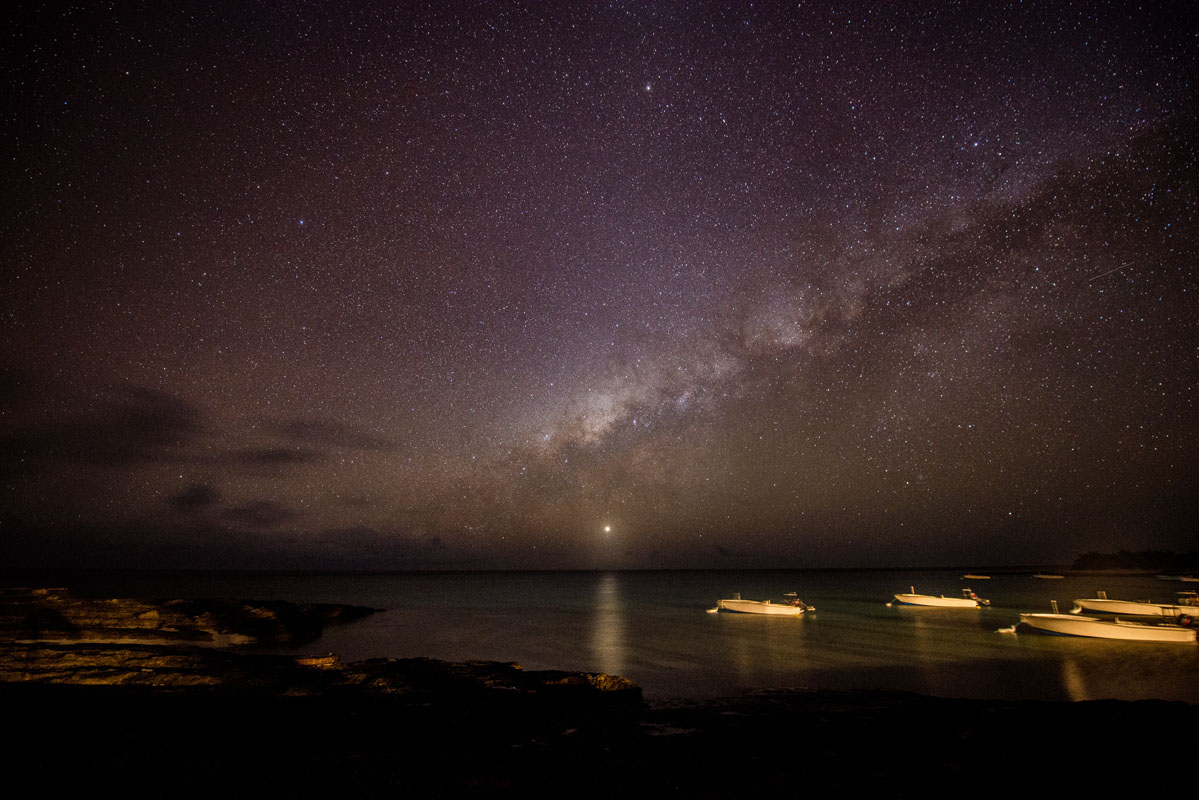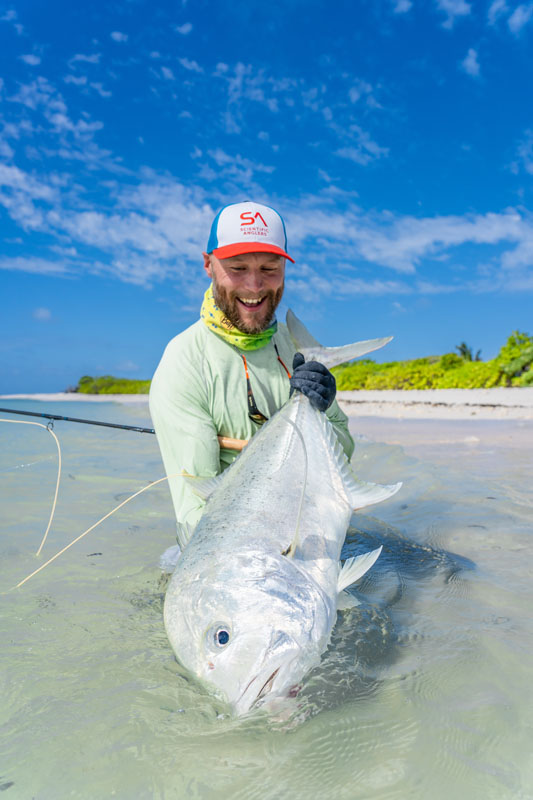
15 minute read
Farquhar Atoll: Taming the Aqua Hulk
Farquhar Atoll
Taming the Aqua Hulk
The Indian Ocean is home to some of the most remote fly fishing destinations in the world. In this article, Rasmus Ovesen takes you to Farquhar Atoll – a fabled and far-flung atoll just north of Madagascar known for its incredible species diversity.
By: RASMUS OVESENPhotos by: RASMUS OVESEN and MARTIN EJLER OLSEN

A FREIGHT TRAIN! Fly line keeps peeling mercilessly off my fly reel at a most disturbing pace and the violent tugs, that continue to transplant themselves through my fly rod, constantly threaten to put me off balance. I’m in hot pursuit across uneven and craggy corals along Farquhar Atoll’s wind-swept outer reefs, where huge swells from the far horizons of the Indian Ocean crash deafeningly onto shore. To say it’s chaotic would be a gross understatement!
My mind is in a state of distress and alert; an overwhelming sense of immediate unreality has set ind, and there’s no processing capacity left for anything but the imminent task at hand – however desperate and hopeless it may seem. I’m connected to a mythological being whose powers seem to exceed mine. And it feels more like this supreme being has hooked me than the other way around.
The racing beats of my agitated heart pound vehemently in my temples. Sweat trickles relentlessly down my face. Lactic acid burns in my legs, and I’m starting to run out of backing. And then – suddenly – the fish miraculously slows down. It seems it can no longer keep up with the rest of the startled school and, instead, it starts to thrash violently about in an attempt to liberate itself from the invisible pull. Perhaps this battle of the wills will eventually tip over to my advantage? Perhaps, I actually do stand a chance.
“My mind is in a state of distress and alert”
”This is perfect. You’ve broken his spirit!”, says the guide enthusiastically, as we finally start to catch up with the fish. It’s poised in a depression between coral bommies and shallow plateaus of turtle grass and is just sitting there with a scowling expression on its face – like some sort of Aqua Hulk. I’m dying to believe the guide, but I fear my opponent still has amble amounts of raw, chaotic power to unleash.

Underneath the waves, I see the distorted silhouette of the strange fish; its swelling metallic-green flanks, the bulging pink forehead, and its bolt cutter beak. Through a temporary window in the water surface, it’s as if our eyes briefly meet. Then, suddenly, the fish bursts into an abrupt trembling paroxysm, its jaws chattering convulsively. The water explodes and the connection is lost. The leader has been cut, the fish is gone, and a fast-dissipating crater-like whirl is all that’s left where it was. The piercing emptiness that I’m left with is unbearable.
It’s the third bumphead parrotfish that I’ve lost within an hour’s worth of hectic fishing, and I can’t stand anymore punishment right now. It’s time for something different? But what?
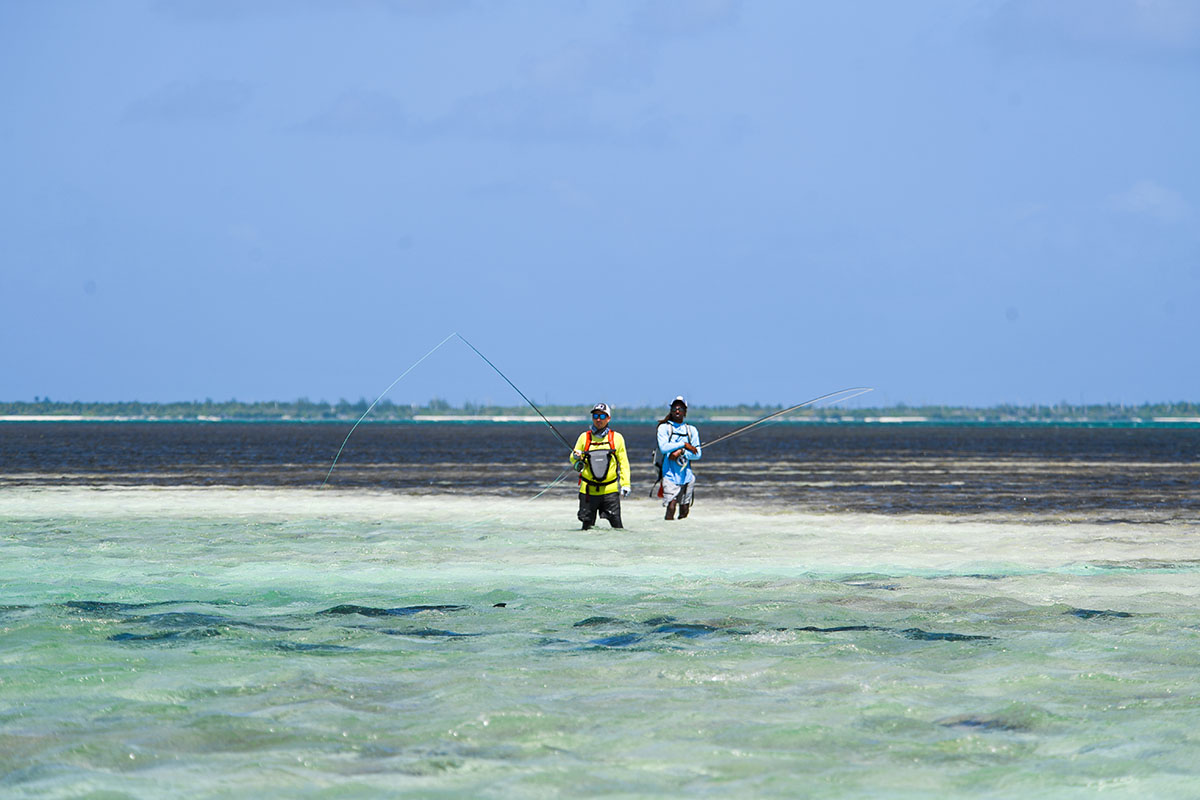
Dramatic species diversity
Farquhar Atoll is home to an acutely stress-provoking amount of exciting fish species. The species diversity here is staggering, and as a visiting fly fisherman it can be difficult to stay focused.
Every little microhabitat within- and along the atoll’s outer reefs houses its own, carefully adapted fish species, and when the weather permits and one heads offshore, countless bluewater species may be encountered. Most of the fish species are both incredibly powerful and strikingly beautiful. And they are challenging and fun to catch. Even so, only a select few of them are considered game fish worthy of being specifically targeted. On the flats, these are mainly giant trevally, bumphead parrotfish, bonefish, triggerfish, and Indo-pacific permit.
“Most of the fish species are both incredibly powerful and strikingly beautiful”
For those, mostly preoccupied with catching the undisputed gangster of the flats – the giant trevally, Farquhar
Atoll is a veritable Mecca. This is where the BBC documentary, ”The Blue Planet II”, in which giant trevally are seen charging out of the water and intercepting birds in mid-air - was filmed, and catching one on a popper at Goelette Island, with lots of black terns awhirl in the wind, is an experience, which – in and of itself – is worth the whole trip.

Bumphead parrotfish is, perhaps, the most immediately pressing and urgent species to catch at Farquhar Atoll. Populations have dramatically declined worldwide and there are now only a handful of atolls left where one can successfully fly fish for them. Farquhar Atoll is one of them. Here, you’ll find big schools of these grossly powerful and alien-like parrotfish as they come onto the reef edges and flats to chew-, crush- and derive nutrients from the corals that grow here.
Ever-present on Farquhar Atoll’s pearlescent sandy flats and beaches, whether in big schools of smaller fish or in small nervous groups of full-grown specimens, is the ‘ghost of the flats’: The bonefish.
This formidable- but oftentimes overlooked gamefish is a high-octane and furiously paced adversary that is known for gentle takes followed by explosive runs. Anywhere else on this planet, bonefish are a prominent part of the main cast. On Farquhar, however, it’s more of a peripheral extra that doesn’t shine with its absence until you desperately need one to complete a flats- or grand slam.
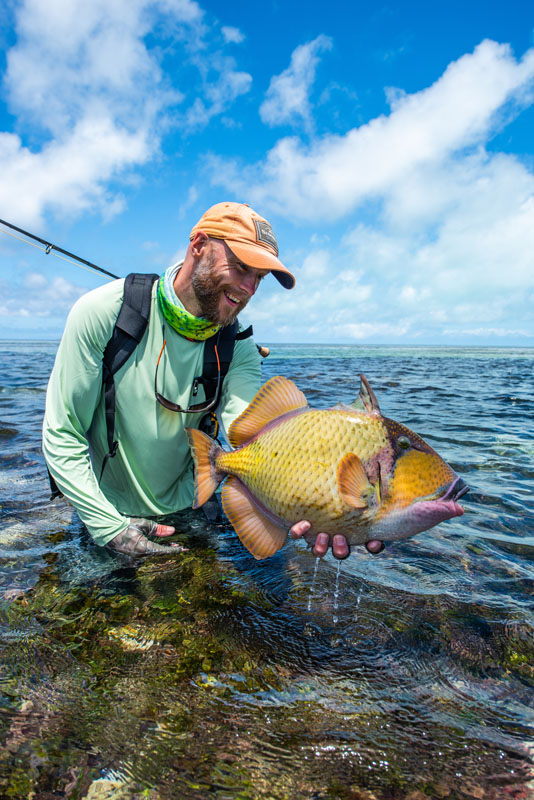
Triggerfish are a species of fish in dire need of a psychologist. They are quite bi-polar; on the one hand incredibly territorial, aggressive, and ferocious, on the other hand extremely skittish, ambivalent, and finicky. They also happen to pack a bite like few other fish, capable as they are, of completely demolishing hooks (or biting a finger clean off for that matter), and once you hook one, it’s likely to surge directly towards a coral bommie or similar and wedge itself under- or inside it using its “trigger”-shaped dorsal fin as a locking mechanism. It’s an interesting fish to say the least!

Permit are found on many of the same flats that house bonefish. These gilt-edged fish, that can turn even the most experienced fly fisherman with saltwater in his veins into a fumbling nerve-wreck, are among the most edgy and picky fish on the flats – and thus one of the most challenging to catch. They typically show up solitary or in small schools, and both technical skill and luck are required to lure one into striking. When it finally happens, you’re in for a long and arduous fight. Farquhar Atoll isn’t widely recognized as a permit destination but make no mistake! They are there in surprising numbers, and many of the fish are BIG!

Do as the guide says!
One of my primary goals in traveling to Farquhar Atoll is to catch one of its signature fish; a bumphead parrotfish. However, I also know from experience that it can be counter-productive to be too myopically preoccupied with specific goals. And right now, my will is broken! I have completely lost all self-confidence, and highly doubt that it’s possible to land one of these maniacal fish on steroids.
The guide, Shaun Wampach, is ready to go. He has already mentioned, earlier on, that the best way to fish Farquhar Atoll is with an open mind; to simply let the tidal cycles and weather conditions decide where-, when-, and what to fish for. And if there’s one thing, I’ve learned throughout the years, it’s to do as the guide says. I therefore take him at his word, leave my destiny in his hands, and satisfy myself with at least having felt the power and savage temperament of a bumphead parrotfish. It’s time to look for new adventures –and it seems as if Shaun has already formulated a new game plan…

The tide has turned, and cool oceanic water has now started to flood across the outer reefs. We’ve relocated to the north-eastern part of the atoll where the conditions should be about right for giant trevally and sporadic triggerfish. What we’re met with, however, is something entirely different: Waving spade-like tails and massive blue-green shadows across shallow coral flats.

”Sorry mate. It seems we’re not quite done with the bumpies”, says Shaun, as he hands me my fly rod with a big grin on his face. I follow his orders with reluctance but find myself fully focused and ready a few moments later, as we come within casting range.
”Chaos Will Reign”
My first cast is right on the money: Just on the edge of the school. I keep contact with the fly, then feel a slight tautness and watch in awe as an area, the size of an uptown living room explodes in cascades of water. As a startled herd of buffaloes, the whole school now charges towards the edge of the reef, and I lean back and apply as much pressure as I possibly dare in order to prevent the fish I’ve hooked from doing the same thing. This is make or break!
The next 10 minutes are chaotic and – for the most part – look completely hopeless. I barely manage to separate the fish I’ve hooked from the remainder of the school, but I haven’t yet come close to breaking its spirit. It thrashes angrily about somewhere out there –beyond meter-high waves that collide blindly against the edge of the reef –and I find myself in neck-deep water high-sticking the fish, trying to prevent it from cutting me off on coral bommies and random volcanic structure.

Fittingly, since he is to blame for this whole ordeal, Shaun now gets a workout of his own. With death defying determination, he jumps into the waves, wades, swims, and dives for the fish and – after being completely gone for a disturbingly long while – he finally washes up onto the reef drenched and short of breath, with a bleeding shin and a giant blue-green fish sticking out of his impossibly small landing net. Jubilant scenes now play out. My dream has come true!
A liberated fly fisherman
The rest of the day, I feel liberated, without further expectations or nerves. A giant trevally reveals itself in the waves. I cast like a god into the wind, place the fly perfectly ahead of the fish, watch as the clearly agitated fish inhales the fly, strip-set the hook with raw power and proceed to land the fish with a firm and disciplinary hand. Like a boss!
“A giant trevally reveals itself in the waves”
Later, in the afternoon, a permit materializes on the back of a big stingray mudding for crustaceans on an expansive, pearlescent flat. I serve up a white Alphlexo Crab - dangling at the end of a 6-metre-long leader tapering into a 15lb tippet. The fish reacts immediately and follows the fly a couple of meters before an ever-so-subtle tug propagates through the line. I resist the temptation to lift the rod, continue stripping, and shortly after everything comes taught. Masterfully done!
The fish surges irresistible outwards and across the flat in an attempt to clear out the rest of my backing, but it doesn’t stand a chance. I take my time; play the fish patiently and use the rod to mitigate the many runs and abrupt pulls. Ultimately, Shaun is able to net a pristine-looking fish overstrewn with sparkly gold dust.
Seeing as we’re already on a big, gleaming flat, we might as well look for a bonefish. It takes shape like a faint ghost in milky water close to the shoreline, and I manage to place another perfect cast that instantly results in a take. Then a series of lightning-quick runs. Of course!

Too fast on the trigger
It isn’t until we wrap up for the day that Shaun confesses. For a long while, I have sat in the boat and watched as my friend and boat partner, Martin, has cast (to no avail) into a big school of permit that kept getting terrorized and spooked by a massive GT.
We’ve now relocated, and Shaun has commanded me to the casting platform in the front of the boat.
Less than half an hour remains of the day, and we’re spending it in a small, shallow bay that so far looks devoid of fish. Then, with less than five minutes left to fish, a full-grown yellow-margin triggerfish, suddenly emerges on top of a coral bommie –right in front of the boat.
I’ve already landed a trophy-sized titan triggerfish the day before, and – as a result – I’m only moderately disappointed when the fish, after having followed the fly over a short distance, spooks and disappears. I know all too well that this is the rule rather than the exception, and it doesn’t detract anything from an otherwise incredible day.
Shaun, on the other hand, seems a lot more affected. Shaken even. And it’s with a tone of disappointment in his voice that he announces that it’s time to pack up. ”That was so close!”, I hear him mutter in a whispering, resigned voice as he jumps down into the boat from his guide-platform in the back.
“It was just a triggerfish”; I casually note after having sorted my gear and prepared for the ride back to the lodge. Shaun looks up from the aft of the boat, stares back at me momentarily, and then breaks into a huge smile.

A golden grand slam?
We’ve been millimeters away from achieving something unique, Shaun now reveals. With the addition of a triggerfish, we would have landed a so-called “golden grand slam”. Allegedly, such an achievement has only been accomplished twice in Alphonse Fishing Company’s more than 25-year-long history, and it has never happened on Farquhar Atoll specifically. Shaun has even heard rumors that anyone who succeeds in landing a “super grand slam” wins a free trip, but this he can’t verify
Either way, I’m nowhere near landing a golden grand slam during the remainder of the trip. And it doesn’t matter. I fish with an open mind, gradually develop a deeper understanding of the atoll’s unique and diverse fishery – it’s rhythm and character. And in the process, I catch lots of fish.
Another fly fisherman will manage to land a golden grand slam on Farquhar Atoll some sweet day. It’s bound to happen – and I bet it will be one of those guests who comes with an open mind and does what his guide says.
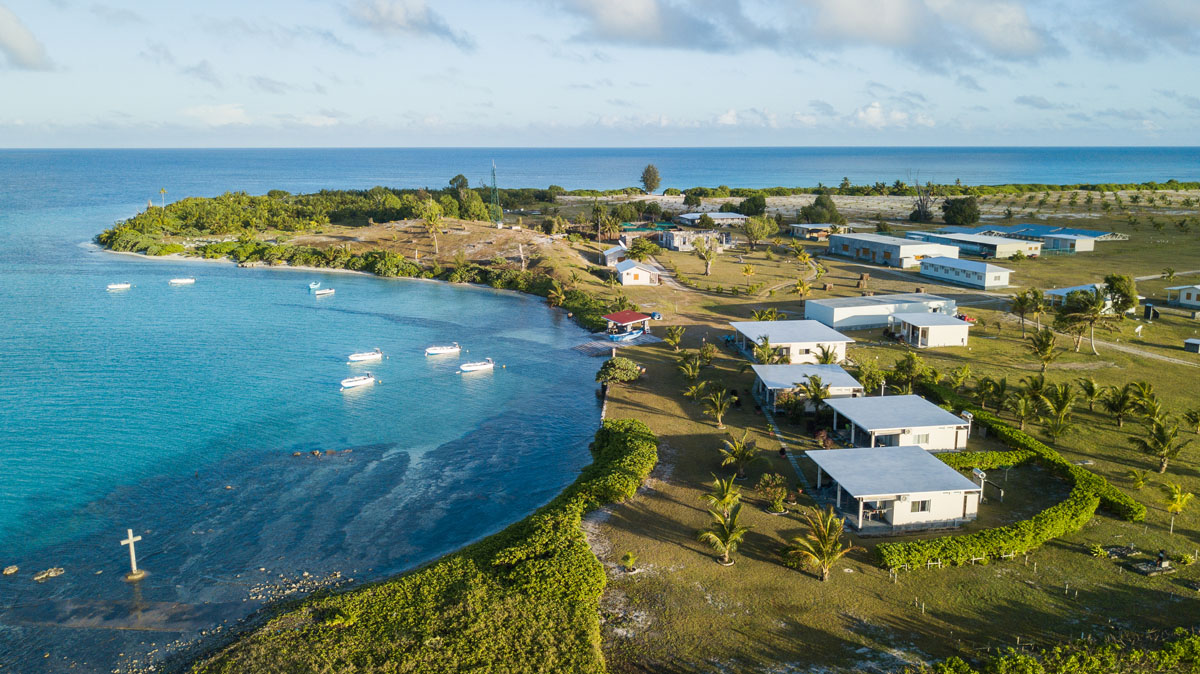

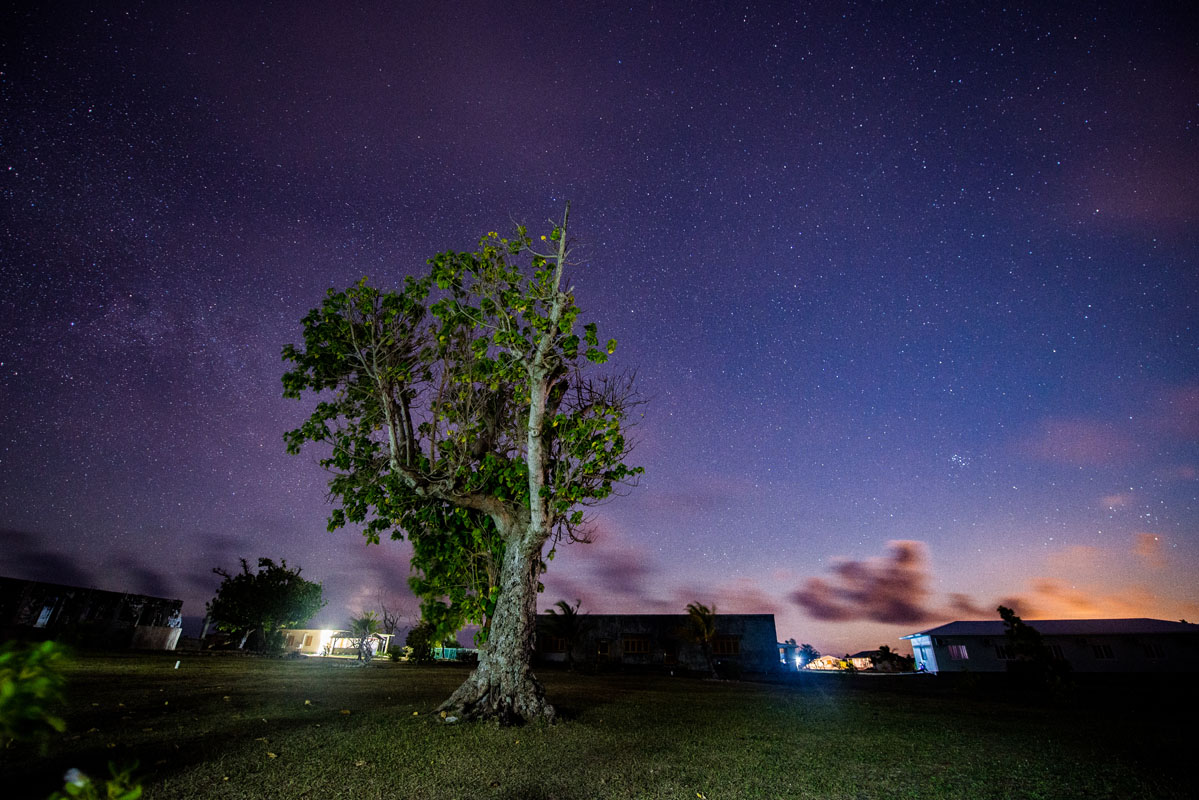
FARQUHAR ATOLL
Farquhar Atoll is named after the former governor of Mauritius, Robert Townsend Farquhar. Since the 1500s, the Atoll has been claimed by different colonial powers. However, from 1976 and onwards, it’s officially been part of the Seychelles. Geographically speaking, Farquhar Atoll is situated approximately 250 kilometers to the northeast of Madagascar in the Western corner of the Indian Ocean.
The largest atoll in the Seychelles with its 17800 hectares, Farquhar Atoll has been inhabited by a small group of fishermen and farmers since the 1850s. Today, the Island Conservation Society, has infrastructure and crew stationed on the atoll, and Alphonse Fishing Company has a full-catering lodge there, which was set up after the cyclone Fantala – the most powerful cyclone in Seychelles history – hit the atoll in April 2016.
Further information about the lodge, which hosts 10 fly fishing guests in individual en suite apartments, can be found here: www.alphonsefishingco.com



THE EQUIPMENT
If you’re planning to fish Farquhar Atoll with an open mind, it’s a good idea to bring both light and heavy tackle. For bonefish and permit, a 9’ 8-weight rod is optimal, while a 9’ 10-weight is perfectly suited for triggerfish and bumphead parrotfish. For giant trevally, even heavier equipment is required. 9’ 12-weights are usually the preferred choice to tame these supernaturally powerful fish. (And you might consider bringing a 15-weight setup for bluewater fishing for dogtooth tuna, sailfish, and the likes).
The fly reels should be saltwater-resistant, fitted with strong and smooth drag systems with immense stopping-power, and capable of storing 150 – 200 yards of backing. In terms of giant trevally, both the backing and fly line should have a breaking strength of about 100lbs – and the same goes for the leaders, which typically consist of 6 – 8 feet of straight nylon. Floating WF-lines such as Scientific Anglers’ Amplitude Grand Slam and Big Water Taper are among the top-choices for the Farquhar fishery.
Be sure to have all three set-ups rigged and ready at all times, as you never know what’s going to show up next on the flats.
